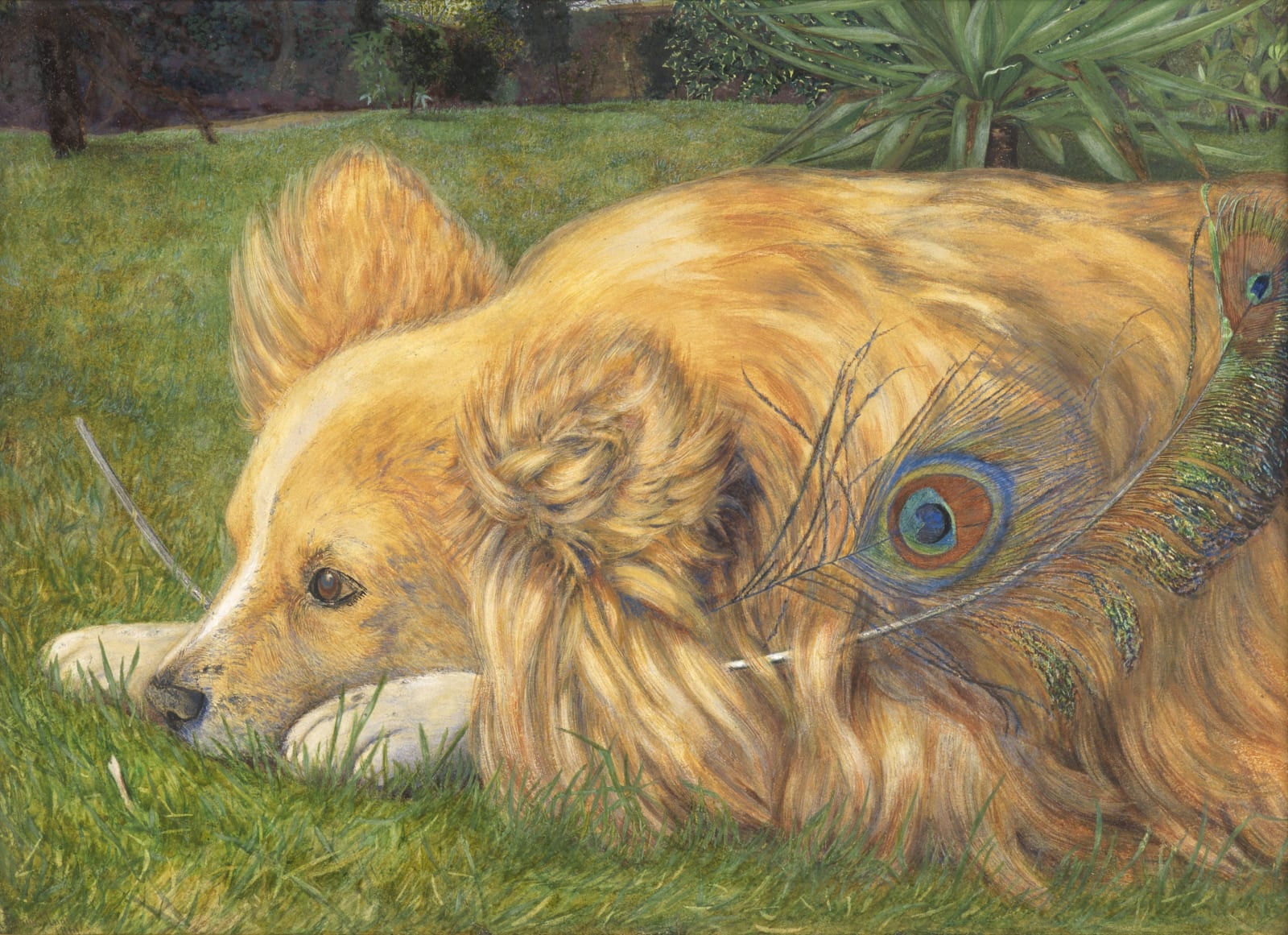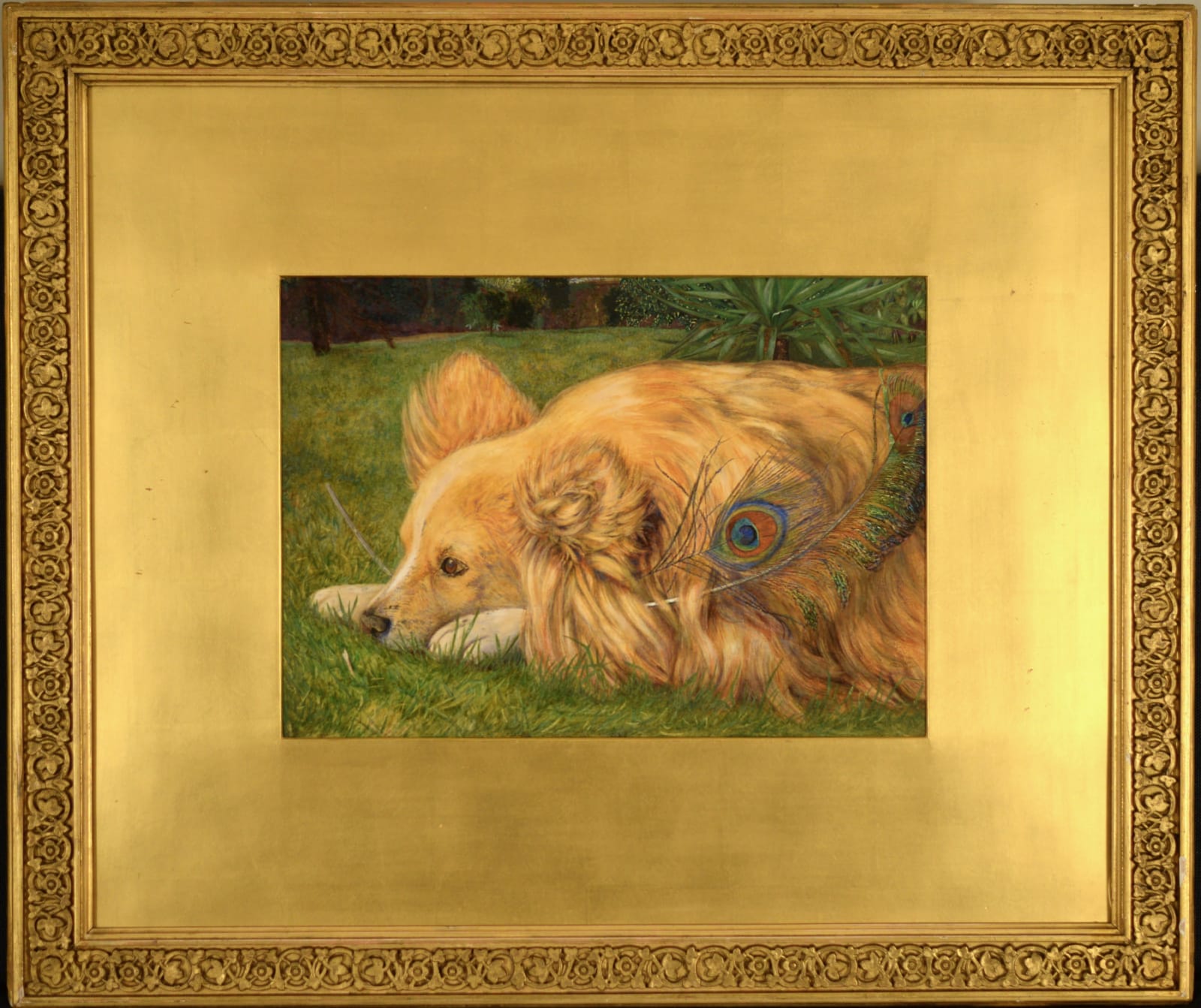Emily Hunt (1836-1922)
Provenance
Collection of Thomas Combe, Oxford;
Thence by descent to his wife Martha Combe, 1872;
Martha Combe Executors' Sale, J.R. Mallam and Son, St. Paul's Schools, Oxford, 23 February 1894, lot 99;
Purchased from the above sale by John Crossley, nephew of Thomas Combe;
Thence by descent to the present owner
Exhibitions
Royal Academy, 1862, no 976
Literature
Judith Bronkhurst, William Holman Hunt: A Catalogue Raisonné, New Haven and London, 2006, volume II, p 96
This Pre-Raphaelite watercolour shows Thomas Combe’s collie dog in Combe’s garden in Oxford. Combe lived at North House in the quadrangle of the Clarendon Press, of which he was Superintendent. He was an important patron of the Pre-Raphaelites, and in particular of William Holman Hunt who loved him like a father. The title and the feather suggest that a peacock-related incident has just occurred.
In 1857 Emily moved in with her brother William Holman Hunt at 1 Tor Villa, Kensington, which they rented from the artist James Clark Hook, so that Hunt could teach her to draw. Mentoring her work took up a good deal of his time, and on 11 May 1862 he complained to Thomas Combe: ‘When I get up from my own work to rest my eyes for a minute or two, I find my sister’s work so backward that I have to labour at that till it’s time to leave off’. At that date, Emily Hunt's Jealous Jessie was on exhibition at the Royal Academy Summer Exhibition. Judith Bronkhurst has suggested that the handling of the dog’s face is more detailed and assured than the rest of the sheet, and that the treatment of the eye and the way in which the shadows round it are delineated are characteristic of William Holman Hunt’s practice. He may also have suggested the unusual composition.



